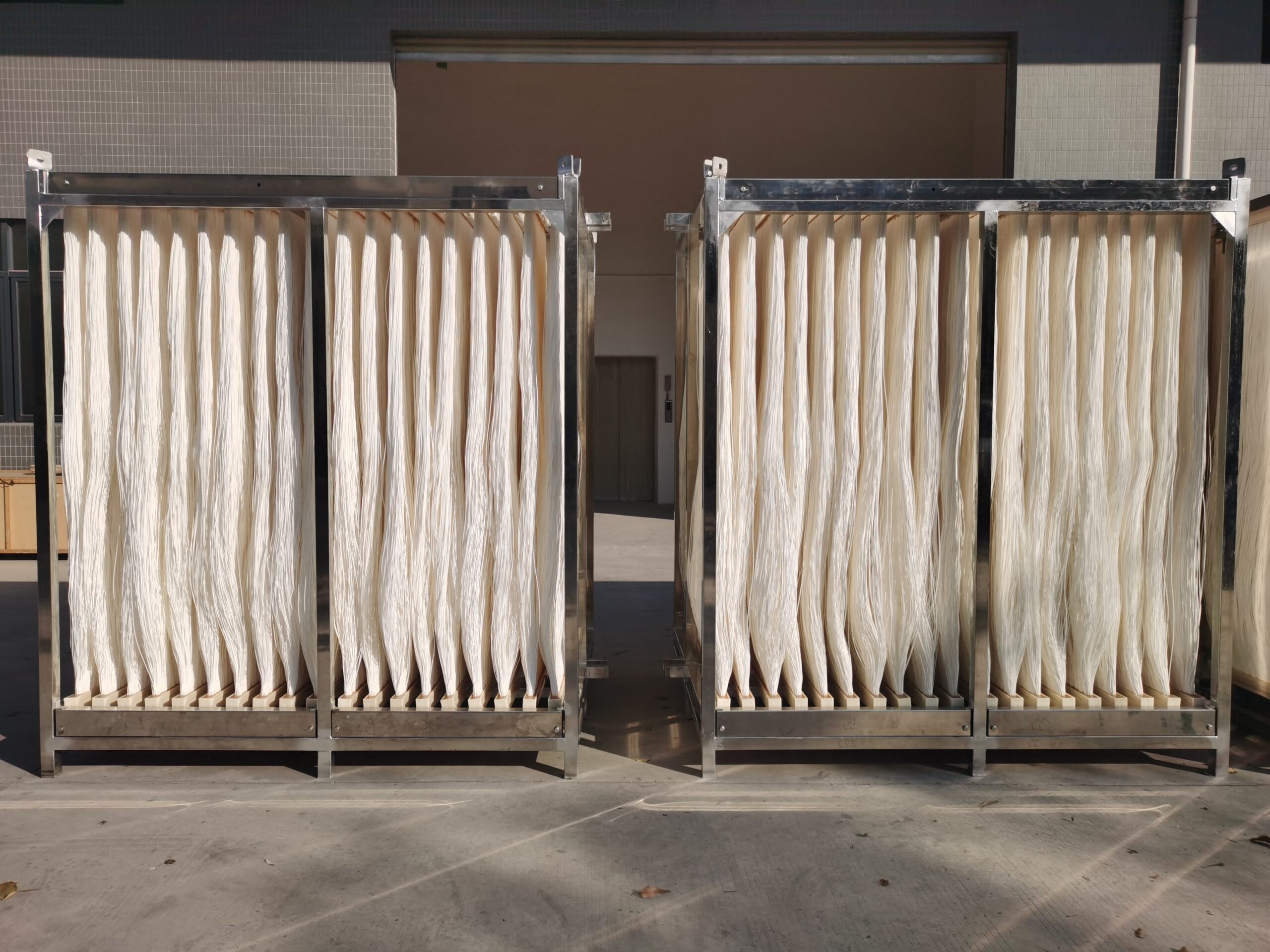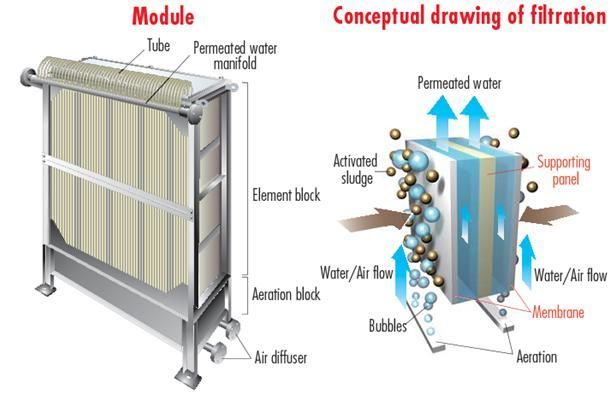The Advantages of Using a Membrane Bioreactor for Efficient Water Purification
The Advantages of Using a Membrane Bioreactor for Efficient Water Purification
Blog Article
Membrane Bioreactors Clarified: Effective Solutions for Tidy Water
Membrane layer bioreactors (MBRs) have actually become an innovative solution for dealing with journalism difficulties of wastewater therapy. By incorporating organic procedures with advanced membrane filtering, MBRs not only boost the quality of treated water however additionally lower the spatial requirements of treatment facilities. As environmental worries escalate, the role of MBR technology in advertising lasting water monitoring comes to be increasingly significant. Nevertheless, the complexities of their procedure, advantages, and prospective applications merit a closer assessment to completely comprehend their effect on the future of water therapy.

What Are Membrane Bioreactors?
Membrane bioreactors (MBRs) are sophisticated wastewater treatment systems that combine organic deterioration procedures with membrane filtration modern technology. This integration permits the reliable removal of impurities from water, making MBRs a favored selection in different applications, including community wastewater treatment and industrial effluent monitoring.

One of the essential benefits of MBRs is their capability to generate premium effluent, frequently ideal for reuse in watering or industrial processes. In addition, MBRs call for a smaller sized footprint contrasted to conventional therapy systems, making them optimal for urban settings where room might be restricted.
Furthermore, MBRs can properly deal with varying influent lots and are much less prone to the effects of hazardous shocks. These characteristics add to their growing popularity as a lasting solution for attending to the increasing demand for clean water while decreasing environmental effects.
How Membrane Bioreactors Work
While the procedure of membrane layer bioreactors (MBRs) may seem complicated, it basically focuses on the synergy between organic procedures and membrane layer filtration. MBRs integrate an organic therapy procedure, usually turned on sludge, with a membrane layer splitting up system to treat wastewater effectively.
In an MBR system, wastewater is very first presented right into a bioreactor where microbes deteriorate raw material and various other impurities. The organic activity reduces the concentration of toxins while promoting the growth of biomass. Following this biological treatment, the mixed liquor is subjected to membrane filtration, which can be microfiltration or ultrafiltration, depending upon the preferred effluent high quality.
The membrane layers act as a physical barrier, enabling water and little solutes to pass while keeping put on hold solids and bigger particles. This enables the system to maintain a high concentration of biomass within the reactor, improving the treatment efficiency.
Furthermore, the constant separation of treated water from the biomass facilitates a portable design and decreases the impact of the treatment facility. Overall, the combination of organic destruction and membrane layer filtering in MBRs leads to effective and dependable wastewater therapy, making certain top notch effluent appropriate for various applications.
Advantages of MBR Modern Technology
Among the essential benefits of membrane layer bioreactor (MBR) modern technology is its capability to produce high-grade effluent with a dramatically lowered footprint contrasted to traditional wastewater treatment approaches. MBR systems successfully combine organic treatment and membrane layer filtering, resulting in remarkable removal of contaminants, consisting of suspended solids, microorganisms, and raw material. This capability causes effluent that frequently fulfills or goes beyond rigid regulatory requirements for reuse and discharge.
In addition, MBR innovation allows for higher biomass focus, which enhances the treatment performance and decreases the needed activator volume. This portable design is especially beneficial in metropolitan locations where area is restricted. The functional flexibility of MBR systems likewise implies they can adjust to differing influent qualities and flow prices, making them suitable blog here for a variety of applications.
Furthermore, the minimized sludge production related to MBR processes adds to lower functional and maintenance costs. The membrane layers offer as a physical barrier, minimizing the risk of clogging and enabling longer operational periods between cleansing. On the whole, the benefits of MBR modern technology make it an appealing remedy for lasting wastewater treatment, addressing both environmental problems and the demand for efficient source management.
Applications of Membrane Bioreactors
With their adaptability and performance, membrane layer bioreactors (MBRs) locate applications throughout various sectors, including municipal wastewater treatment, industrial processes, and even water reclamation. In municipal settings, MBRs supply a small solution for treating wastewater, properly removing impurities while all at once creating high-grade effluent that fulfills rigid regulative standards. This makes them particularly appropriate for areas with limited room.
In industrial applications, MBR innovation is used for treating process water, especially in industries such as food and drink, drugs, and petrochemicals. These markets take advantage of MBRs' ability to take care of high natural loads and their efficiency in recovering beneficial resources from wastewater, explanation such as nutrients and water.
Furthermore, MBRs play a vital function in water reclamation campaigns, allowing the reuse of treated wastewater for irrigation, commercial processes, or also as drinkable water after additional treatment (Membrane Bioreactor). Their performance in removing pathogens and toxins makes them a reputable choice for ensuring water high quality in various reuse applications
Future of Water Treatment Solutions
The future of water therapy options is poised for transformative improvements driven by technological advancement and enhancing ecological awareness. As worldwide water scarcity comes to be a pressing concern, new methods, consisting of membrane bioreactor (MBR) systems, are established to play a critical function in enhancing the effectiveness and sustainability of water therapy processes.
Emerging modern technologies such as synthetic knowledge and equipment learning are expected to maximize treatment operations, permitting real-time tracking and anticipating maintenance. This will enhance the general reliability and efficiency of water treatment centers. Developments in membrane layer materials, such as graphene and nanofiltration, guarantee to raise permeation prices and lower fouling, leading to reduced power intake and functional prices.
Furthermore, the combination of renewable resource resources right into water therapy plants will certainly add to greener practices. The round economic climate design will also obtain traction, motivating the healing of valuable sources from wastewater, such as nutrients and energy.
Conclusion

Membrane layer bioreactors (MBRs) have emerged as a sophisticated remedy for dealing with the pushing difficulties of wastewater therapy. By integrating biological procedures with sophisticated membrane layer filtration, MBRs not just boost the top quality of cured water however additionally decrease the spatial needs of therapy facilities.One of the key benefits of membrane layer bioreactor (MBR) innovation is its ability to create top quality effluent with a dramatically decreased impact compared to traditional wastewater therapy methods.With their adaptability and efficiency, membrane layer bioreactors (MBRs) locate applications across various fields, including look what i found community wastewater therapy, commercial procedures, and even water improvement.In verdict, membrane bioreactors represent a considerable advancement in wastewater treatment innovation, integrating biological procedures with efficient membrane filtration to create premium effluent.
Report this page